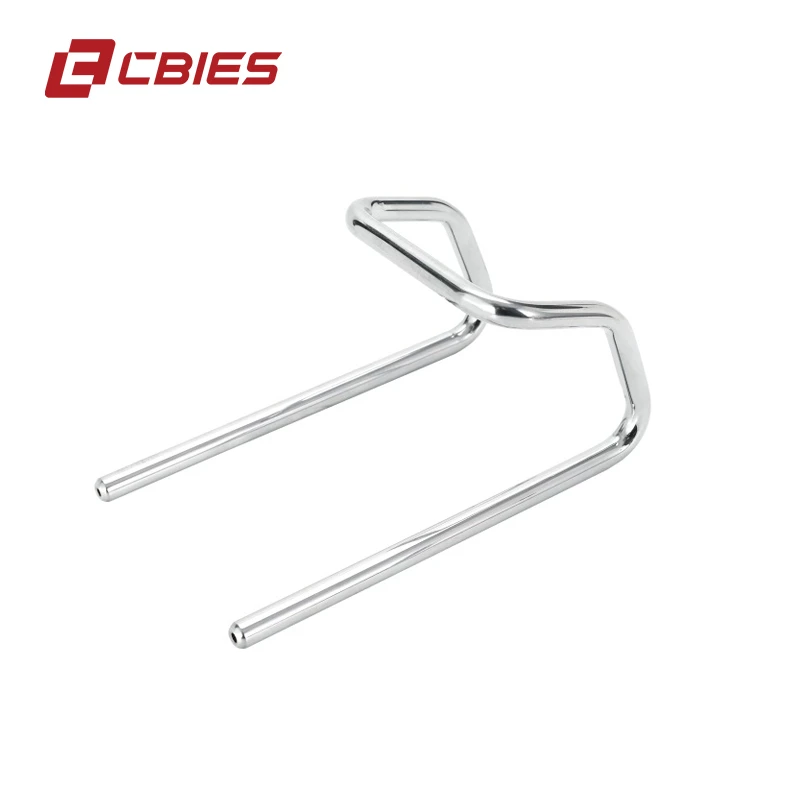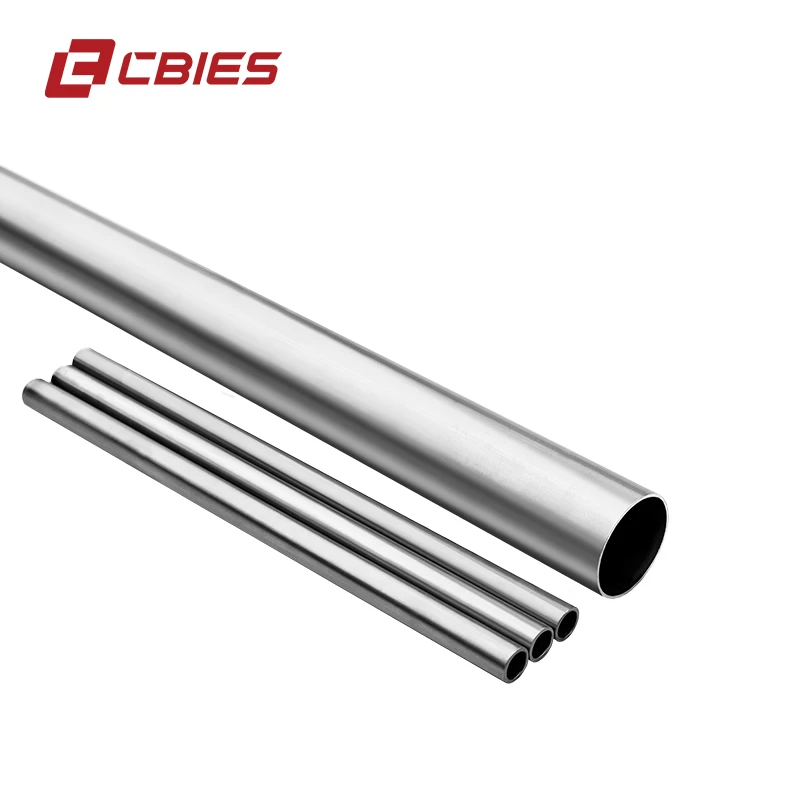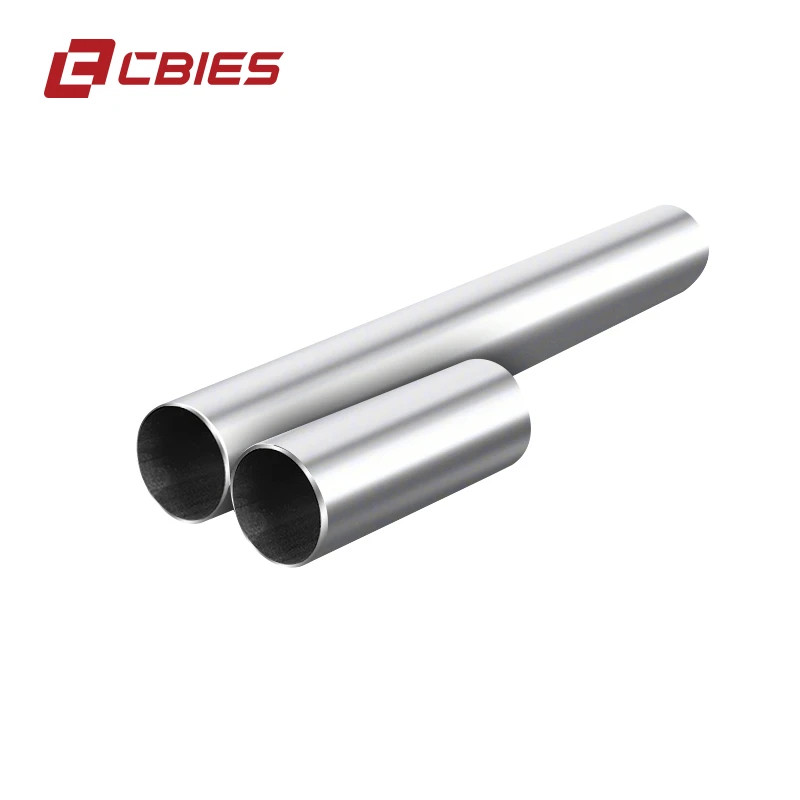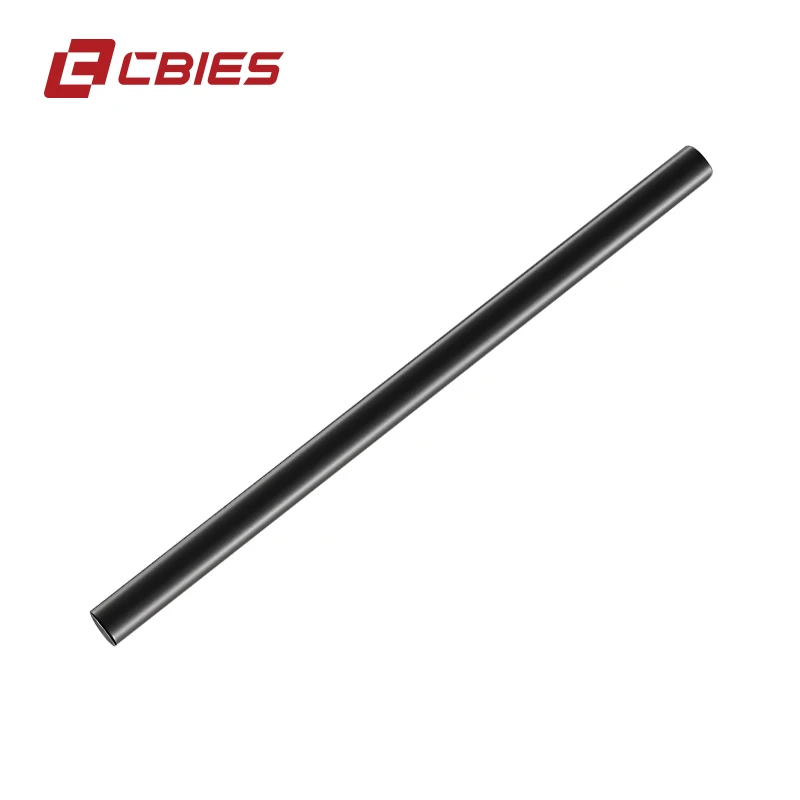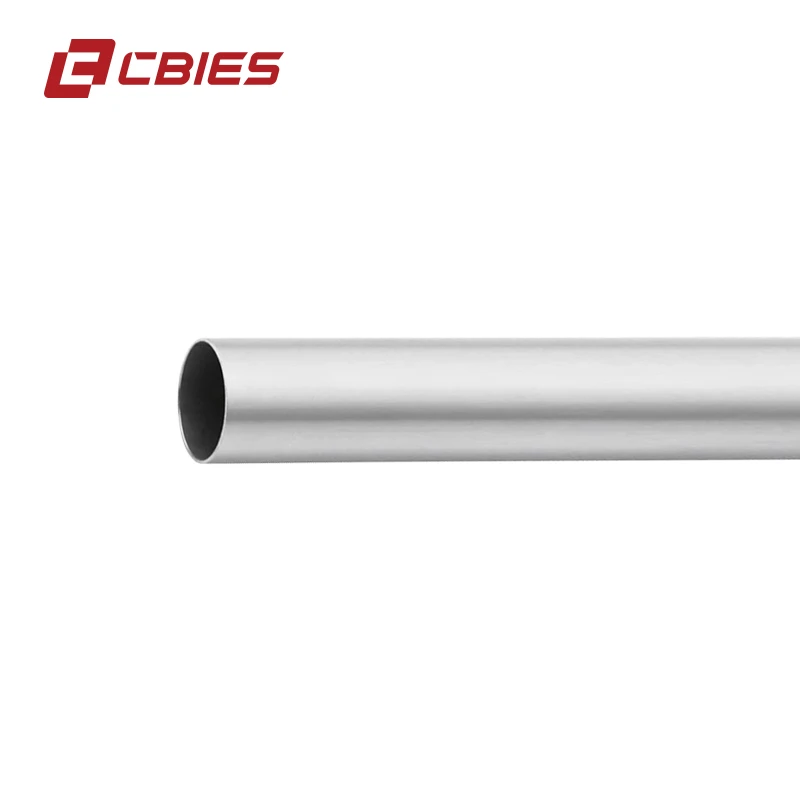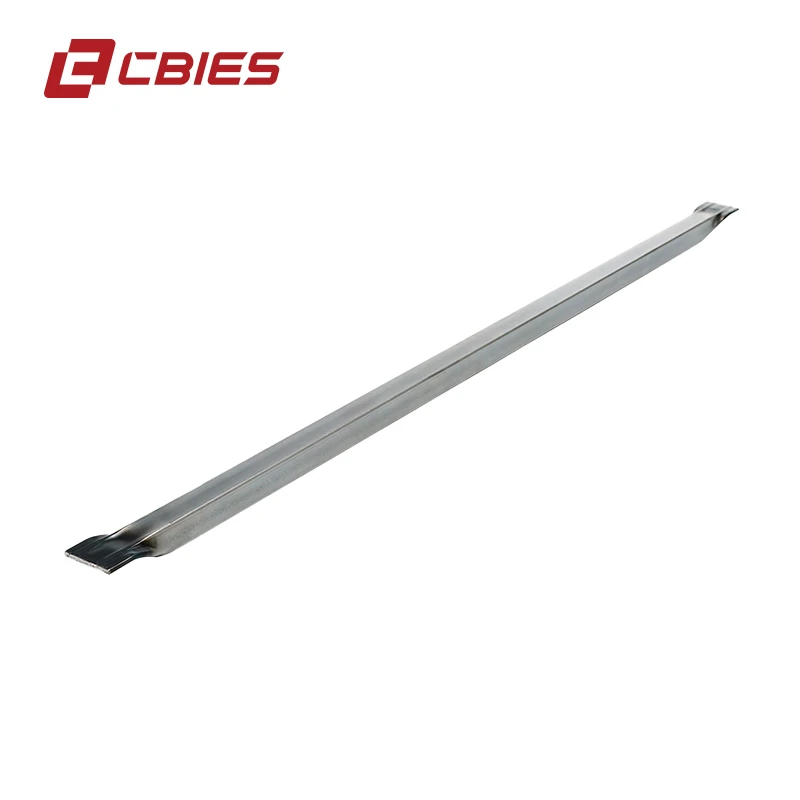Introduction to Precision Tube Flattening in Industrial Applications
In the intricate world of advanced manufacturing and industrial engineering, the precision transformation of tubular materials is a cornerstone for innovation and efficiency across myriad sectors. Among these critical processes, Tube flattening stands out as a highly specialized technique that reconfigures cylindrical tubes into various flat or semi-flat profiles. This process is not merely about mechanical deformation; it is a sophisticated engineering discipline aimed at optimizing material performance, enhancing heat transfer capabilities, facilitating compact designs, and improving structural integrity in complex systems. The demand for flattened tubes has surged in recent years, driven by global megatrends such as lightweighting in transportation, the increasing need for high-efficiency heat exchangers in HVAC and energy sectors, and the ongoing miniaturization of electronic and medical devices. Manufacturers are continually pushing the boundaries of material science and mechanical engineering to achieve tighter tolerances, superior surface finishes, and greater material versatility. This introductory overview sets the stage for a deep dive into the technical intricacies, application diversity, and strategic importance of precision tube flattening in today's demanding industrial landscape.
The evolution of industrial processes has seen a significant shift towards bespoke component solutions, where standard tubular products often fall short of meeting specific functional or spatial requirements. This is where the nuanced capabilities of Tube flattening become indispensable. From creating specialized fins for heat dissipation in sophisticated cooling systems to crafting unique structural elements for aerospace applications, the ability to precisely control the deformation of metal tubes unlocks new design possibilities and performance efficiencies. The process addresses critical engineering challenges, such as maximizing surface area for thermal exchange within confined spaces, achieving specific aerodynamic profiles, or providing enhanced structural rigidity without adding excessive weight. Understanding the underlying principles, the array of materials amenable to this process, and the advanced manufacturing techniques employed is crucial for engineers, procurement specialists, and R&D professionals seeking to leverage this technology for competitive advantage. This comprehensive guide aims to illuminate every facet of tube flattening, from its foundational concepts to its most advanced applications and the factors influencing its successful implementation.
Understanding Tube Flattening: Core Concepts and Evolving Industry Trends
At its core, Tube flattening involves the controlled mechanical deformation of a cylindrical tube to achieve a desired non-circular profile, most commonly a rectangular, oval, or flat shape. This process is primarily undertaken to optimize the tube's functional properties for specific applications, rather than simply altering its aesthetics. For instance, in heat exchange systems, flattening a tube significantly increases its surface area to volume ratio, thereby enhancing the efficiency of thermal energy transfer. This is particularly crucial in compact heat exchangers used in automotive radiators, HVAC systems, and industrial chillers, where space is a premium and thermal performance is critical. Beyond heat transfer, flattened tubes are also employed for structural reinforcement, providing greater rigidity and load-bearing capacity in specific directions compared to their circular counterparts, making them valuable in lightweight frame structures and support systems. Furthermore, the process can facilitate easier assembly and stacking in multi-tube configurations, streamlining manufacturing processes and reducing overall system footprints. The precision required in this deformation ensures that material integrity is maintained, and the desired dimensional tolerances are consistently met across production batches, which is paramount for high-performance applications.
The landscape of Tube flattening technology is continually evolving, driven by advancements in materials science, manufacturing automation, and the escalating demand for highly specialized components. Current industry trends emphasize the integration of smart manufacturing principles, often referred to as Industry 4.0, into the flattening process. This includes the implementation of real-time monitoring systems, advanced sensor technologies, and data analytics to ensure unprecedented levels of precision and quality control. Automated flattening lines, equipped with sophisticated programmable logic controllers (PLCs) and robotic handling systems, are becoming standard, reducing human error and increasing throughput. There's a growing focus on the processing of exotic and high-performance alloys, such as titanium, inconel, and specialized stainless steels, which present unique challenges due to their inherent hardness and spring-back characteristics. Furthermore, sustainability is becoming a key driver, pushing manufacturers to develop more energy-efficient flattening techniques and minimize material waste. The industry is also witnessing an increased demand for multi-pass flattening and forming processes that can achieve complex, custom profiles beyond simple rectangular shapes, catering to niche applications requiring highly optimized fluid dynamics or unique structural properties. These trends collectively underscore the dynamic and innovative nature of the tube flattening sector.
The Advanced Manufacturing Process of Precision Tube Flattening
The manufacturing of precision flattened tubes is a multi-stage process that demands meticulous control over material properties and mechanical forces. It typically commences with the selection of the appropriate raw tubular material, which can range from various grades of stainless steel (e.g., 304, 316L for corrosion resistance and hygiene), carbon steel (for structural applications), copper (for excellent thermal conductivity), to aluminum alloys (for lightweighting in automotive and aerospace). The choice of material dictates subsequent processing parameters due to varying yield strengths, ductility, and work-hardening characteristics. Pre-processing steps often include cutting the raw tubes to specific lengths, deburring the ends to ensure smooth surfaces, and thorough cleaning to remove any lubricants or contaminants that could interfere with the flattening dies or subsequent surface treatments. Some advanced applications may require pre-annealing or other heat treatments to soften the material and improve its ductility, thereby preventing cracking or excessive internal stresses during the flattening process. This initial phase is critical, as any inconsistencies in material quality or preparation can propagate errors through the entire manufacturing chain, compromising the final product's integrity and performance.
The core flattening mechanism involves the controlled mechanical deformation of the tube. This can be achieved through various techniques such as cold rolling, pressing, or drawing. In cold rolling, tubes are passed through a series of precision rollers that progressively apply pressure, gradually reshaping the tube into the desired flattened profile. This method is favored for its ability to produce tight tolerances and excellent surface finishes, often enhancing the material's strength through work hardening. Pressing utilizes dies that compress the tube into a predefined shape, suitable for shorter lengths or specific complex profiles. Drawing, less common for general flattening but utilized for specific applications, involves pulling the tube through a die. Critical to all these methods is the design and material of the flattening dies and rollers; they must be crafted from highly durable, wear-resistant materials like hardened tool steel or carbide, precisely machined to ensure consistent pressure distribution and prevent material galling. Process control variables, including applied pressure, roll gap settings, and feed rate, are continuously monitored and adjusted, often automatically, to compensate for material variations and achieve the exact desired dimensions and flatness. Some materials or complex profiles may necessitate multiple passes, with intermediate annealing treatments, to achieve the final shape without inducing excessive stress or fracture.
Following the primary flattening operation, several post-processing steps are often indispensable to ensure the optimal performance and longevity of the finished product. Heat treatment, such as stress relieving or full annealing, is frequently applied to alleviate internal stresses induced during the cold working process. This step is crucial for preventing delayed distortion, improving fatigue resistance, and restoring some ductility to the material, which might have been reduced due to work hardening. Precision finishing operations, often involving Computer Numerical Control (CNC) machining, are then employed for achieving highly accurate end dimensions, specific cutouts, or intricate features like mounting holes or connection points. These machining operations ensure that the flattened tubes integrate seamlessly into larger assemblies. Surface treatments are also critical for enhancing the tubes' functional properties. This can include passivation for stainless steels to restore their passive layer and improve corrosion resistance, electro-polishing for applications requiring ultra-smooth and hygienic surfaces (e.g., medical devices), or the application of specialized coatings for improved wear resistance, reduced friction, or specific thermal properties. These finishing steps are tailored to the specific end-use requirements, ensuring the flattened tube meets all performance criteria for its intended environment.
Quality assurance and rigorous inspection are integral to the production of high-performance Tube flattening. Compliance with international standards such as ISO 9001 for quality management systems, and material-specific standards like ASTM (American Society for Testing and Materials), ANSI (American National Standards Institute), DIN (Deutsches Institut für Normung), and JIS (Japanese Industrial Standards), is non-negotiable. These standards dictate precise requirements for material composition, dimensional tolerances, mechanical properties, and surface finish. Inspection protocols typically involve both non-destructive testing (NDT) and, occasionally, destructive testing. NDT methods include ultrasonic testing to detect internal flaws or wall thickness variations, eddy current testing for surface cracks and material homogeneity, and visual inspection for surface defects. Dimensional accuracy is verified using advanced laser measurement systems, digital calipers, and profilometers that can measure flatness, parallelism, and overall dimensions with micron-level precision. For destructive testing, samples may undergo tensile strength tests to determine yield and ultimate tensile strength, hardness tests (e.g., Rockwell, Vickers) to assess resistance to deformation, and bending tests to evaluate ductility and formability. A comprehensive traceability system, documenting every stage from raw material procurement to final inspection, provides complete transparency and accountability, ensuring that each flattened tube consistently meets the specified high-performance criteria and adheres to strict industry regulations, ultimately enhancing user trust and product reliability.
Technical Parameters and Performance Metrics of Tube Flattening
The performance and suitability of flattened tubes for specific industrial applications are critically defined by a range of precise technical parameters. These metrics quantify the quality, dimensional accuracy, and mechanical integrity of the finished product, directly impacting its functional efficiency and longevity. Key parameters include the flatness tolerance, which refers to the maximum permissible deviation from a perfectly flat surface across the width of the flattened tube. This is crucial for applications requiring tight stacking or precise fitment, such as plate heat exchangers or specialized structural components. Wall thickness variation, another vital parameter, measures the consistency of the tube's wall thickness before and after flattening, ensuring structural uniformity and predictable thermal transfer. Material yield strength after flattening indicates the material's resistance to permanent deformation, a critical factor for components subjected to mechanical stress. Surface roughness (Ra value) quantifies the texture of the flattened surface, influencing fluid flow dynamics in heat exchangers and corrosion resistance by reducing potential sites for corrosive attack. Achievable dimensions, encompassing the final width, height, and length, define the specific profiles that can be manufactured, directly impacting design possibilities and overall system compactness. Understanding and specifying these parameters are essential for engineers to ensure the flattened tubes meet their design intent and perform reliably under operational conditions.
Beyond basic dimensions, several advanced metrics define the true performance of Tube flattening. The "spring-back" effect, a common phenomenon where the material partially returns to its original shape after deformation, is meticulously controlled through precise tooling and process parameters, often necessitating over-bending to achieve the target profile. Residual stress, another critical consideration, refers to the stresses locked within the material after flattening; excessive residual stress can lead to premature failure or dimensional instability. Advanced manufacturers employ techniques like stress relieving or controlled deformation to minimize these stresses. The integrity of the weld seam, if the original tube was welded, must be maintained throughout the flattening process to prevent rupture or weakening, often requiring specialized tooling to support the weld area during deformation. For applications involving fluid flow, internal cleanliness and deburring are paramount to prevent blockages or erosion. Lastly, the long-term durability and fatigue life of flattened tubes are assessed through rigorous testing, especially for components subjected to cyclic loading or thermal cycling. These complex interactions of material science, mechanical engineering, and precise process control collectively determine the overall quality, reliability, and functional performance of the flattened tubes, making parameter specification and verification a crucial aspect of procurement and design.
Typical Technical Parameters for Precision Tube Flattening
| Parameter |
Description |
Typical Value Range (High Precision) |
Significance in Application |
| Flatness Tolerance |
Maximum deviation from a perfect flat plane. |
±0.05 mm to ±0.2 mm (depending on width) |
Critical for stacking, sealing, and heat exchanger efficiency. |
| Wall Thickness Variation |
Deviation in wall thickness post-flattening from nominal. |
±5% to ±10% of nominal thickness |
Impacts structural integrity, thermal transfer, and material usage. |
| Surface Roughness (Ra) |
Average surface roughness of the flattened tube. |
Typically
| Affects fluid flow, corrosion resistance, and aesthetic appeal. |
| Achievable Width |
Range of possible widths for the flattened profile. |
5 mm to 100 mm (dependent on original OD & wall) |
Defines design flexibility and application fit. |
| Achievable Height |
Range of possible heights (thickness) for the flattened profile. |
0.5 mm to 10 mm (dependent on original OD & wall) |
Crucial for compactness and cross-sectional flow area. |
| Material Hardness Post-Flattening |
Hardness of the material after cold working. |
Varies significantly by material and process (e.g., 80-100 HRB for Stainless Steel 304) |
Indicates work hardening, wear resistance, and ductility. |
| Internal Cleanliness |
Absence of internal contaminants or burrs. |
Particle count
| Essential for fluid flow, preventing blockages in heat exchangers. |
Diverse Application Scenarios and Sectoral Impact
The versatility of Tube flattening makes it an indispensable process across an incredibly diverse range of industries, each leveraging its unique advantages to optimize performance and design. In the HVAC (Heating, Ventilation, and Air Conditioning) sector, flattened tubes are fundamental to the design of compact and highly efficient heat exchangers, coils, and condensers. Their increased surface area-to-volume ratio significantly enhances thermal transfer efficiency, enabling smaller, lighter, and more energy-efficient HVAC units, crucial for both residential and commercial applications. Similarly, the automotive industry relies heavily on flattened tubes for radiators, intercoolers, and exhaust heat recovery systems, where space constraints and the need for optimal cooling or heating performance are paramount. The ability to precisely shape tubes for these critical components contributes directly to vehicle fuel efficiency and overall performance. In the petrochemical and power generation sectors, flattened tubes find application in specialized heat exchangers and process piping where corrosive or high-temperature fluids demand specific material properties and enhanced thermal transfer capabilities within a limited footprint. The metallurgical industry also benefits, utilizing flattened tubes for various structural components or specialized fluid delivery systems within challenging operational environments.
Beyond these major sectors, the impact of Tube flattening extends into highly specialized fields. In aerospace, flattened tubes are used in lightweight heat exchangers for aircraft environmental control systems and in specific structural elements where a high strength-to-weight ratio and precise profiles are critical. The medical device industry employs miniature flattened tubes in endoscopes, surgical instruments, and fluid delivery systems, where biocompatibility, extreme precision, and the ability to navigate confined spaces are non-negotiable. For instance, tiny flattened tubes can be engineered to carry fluids or optical fibers within minimally invasive surgical tools. Even in consumer electronics, especially in high-performance computing, flattened copper or aluminum tubes are integral to advanced cooling solutions for processors and graphics cards, effectively dissipating heat from compact components. In fluid conveyance systems generally, particularly those requiring precise flow control or compact manifolds, flattened tubes offer superior space utilization compared to traditional round tubing, enabling more intricate and efficient system designs. This broad adoption underscores the technology's adaptability and its profound influence on engineering solutions across the global industrial landscape, enabling performance gains previously unattainable with conventional tubular forms.
The inherent advantages derived from precision Tube flattening translate directly into tangible benefits for end-users and system integrators. A primary advantage is significant energy saving, particularly evident in heat exchange applications. By maximizing the heat transfer surface area within a given volume, flattened tubes enable more efficient thermal exchange, reducing the energy consumption required for heating or cooling. This directly contributes to lower operational costs and reduced environmental impact. Another critical benefit is enhanced corrosion resistance, which is achieved through careful material selection (e.g., specific stainless steel grades, nickel alloys) and advanced surface treatments (e.g., passivation, specialized coatings). These measures protect the flattened tubes from aggressive media, extending their operational lifespan and reducing maintenance requirements in harsh industrial environments like chemical processing plants or offshore platforms. Furthermore, the compact design possibilities facilitated by flattened tubes allow for significant space optimization, which is crucial in applications where footprint is limited, such as in vehicles, aircraft, or densely packed electronic enclosures. This enables the development of smaller, lighter, and more aesthetically integrated products.
Beyond energy efficiency and corrosion resistance, flattened tubes also offer enhanced structural integrity and mechanical performance in specific orientations. For certain structural applications, their redesigned cross-section can provide superior bending stiffness or torsional resistance compared to an equivalent round tube, optimizing material use and reducing overall weight. This is particularly valuable in aerospace and automotive applications where every gram matters. The precise control over the flattening process ensures uniform wall thickness and consistent mechanical properties across the entire length of the tube, contributing to predictable performance and reliability under operational stresses. Moreover, the ability to achieve precise dimensions and tight tolerances simplifies assembly processes, reducing manufacturing time and costs. For example, flattened tubes can be easily stacked or nested, facilitating the construction of multi-channel systems. This combination of superior thermal performance, material resilience, space efficiency, and structural advantages makes precision Tube flattening a strategic choice for engineers looking to push the boundaries of design and achieve optimal functional outcomes in their respective fields.
Technological Superiority and Competitive Advantages in Tube Flattening
In a highly competitive global market, technological superiority in Tube flattening is not merely an advantage; it is a fundamental differentiator that separates leading manufacturers from the rest. This superiority stems from a blend of advanced machinery, sophisticated process control, and profound material science expertise. Leading-edge manufacturing facilities deploy state-of-the-art flattening machines, often custom-engineered, that incorporate multi-stage rolling or pressing capabilities, dynamic tension control, and integrated laser measurement systems. These machines are designed to handle a wide array of challenging materials, from standard carbon and stainless steels to high-performance alloys like Inconel, Monel, titanium, and specialized copper alloys, each requiring unique deformation strategies. The ability to precisely control the spring-back effect, minimize residual stress, and maintain the integrity of weld seams during the flattening process for these diverse materials is a hallmark of true technical expertise. Furthermore, the integration of automation and robotics into the flattening lines ensures unparalleled consistency, reducing batch-to-batch variations and enabling high-volume production with minimal human intervention, thereby driving down costs and accelerating delivery schedules.
A significant competitive advantage for a premier manufacturer in the Tube flattening sector lies in its robust research and development (R&D) capabilities. Continuous investment in R&D allows for the exploration of new flattening techniques, the development of proprietary tooling designs, and the optimization of process parameters for emerging materials or more complex geometries. This forward-looking approach ensures that the manufacturer remains at the forefront of innovation, capable of addressing future industry challenges and offering bespoke solutions for highly specialized applications. For instance, developing methods to flatten tubes with internal features or specific multi-lumen designs requires extensive R&D. Equally important is the presence of a highly skilled and experienced engineering team. These engineers possess deep knowledge of metallurgy, mechanical deformation, and finite element analysis (FEA) to simulate and predict material behavior during flattening, thereby optimizing tooling and process parameters even before physical production begins. This combination of advanced machinery, R&D prowess, and engineering acumen allows a manufacturer to consistently produce flattened tubes with superior flatness tolerances, minimal wall thickness variation, excellent surface finishes, and enhanced mechanical properties, setting a benchmark for quality and reliability in the industry. This collective expertise also enables quick adaptation to evolving customer needs and stringent performance specifications, providing a distinct market edge.
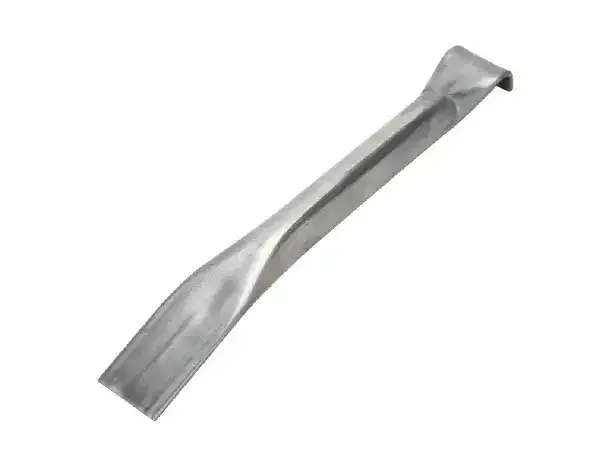
Precision machinery at the heart of the Tube flattening process.
Manufacturer Comparison and Strategic Selection for Tube Flattening Solutions
Selecting the right manufacturer for Tube flattening components is a strategic decision that extends far beyond merely comparing price points. For B2B decision-makers, the choice of partner significantly impacts product quality, supply chain reliability, innovation potential, and ultimately, project success. Key differentiators to consider include a manufacturer's proven track record and years of experience in the specific field of tube deformation. A company with decades of specialized experience often possesses invaluable institutional knowledge regarding material behavior, tooling design nuances, and troubleshooting complex flattening challenges. Furthermore, evaluating a manufacturer's investment in R&D and their capacity for technological innovation is paramount. Leading suppliers are not just fulfilling orders; they are actively developing new processes, materials, and designs that can provide a competitive edge. This includes their ability to work with advanced or exotic alloys, achieve exceptionally tight tolerances, or produce highly customized profiles. Certifications are another non-negotiable criterion; adherence to international quality management standards like ISO 9001, environmental standards like ISO 14001, and industry-specific material certifications (e.g., ASME, PED for pressure-related components) signals a commitment to consistent quality and regulatory compliance.
Beyond technical capabilities and certifications, the operational aspects and customer support infrastructure of a Tube flattening manufacturer are crucial. Evaluating a manufacturer's typical lead times and their flexibility to accommodate urgent or expedited orders is essential for maintaining project schedules and supply chain agility. A robust quality control system, encompassing comprehensive in-process and final inspection procedures, provides assurance that every batch meets the specified performance criteria. This includes rigorous testing protocols and traceability systems that document every step of the manufacturing process. Equally important is the manufacturer's post-sale support and technical assistance. A responsive technical support team that can provide engineering guidance, troubleshoot application issues, and offer insights into optimal material selection and design can be an invaluable asset. Companies that offer comprehensive engineering support, from initial concept design and prototyping to full-scale production, can significantly de-risk complex projects. A transparent pricing structure, clear communication channels, and a reputation for reliability and customer satisfaction, often evidenced by client testimonials or long-term partnerships, collectively define a trustworthy and strategically aligned manufacturing partner. The table below further illustrates key criteria for comparison.
Key Differentiators in Tube Flattening Manufacturer Selection
| Criterion |
Description |
Impact on Project Success |
| R&D Investment & Innovation |
Commitment to developing new processes, materials, and solutions. |
Access to cutting-edge solutions, ability to handle complex requirements, future-proofing designs. |
| Customization Capabilities |
Ability to provide bespoke tube profiles, material combinations, and finishing. |
Tailored solutions for unique applications, optimal performance, design flexibility. |
| Certifications & Compliance |
Adherence to ISO, ASTM, ASME, PED, etc. standards. |
Guaranteed quality, reliability, and regulatory acceptance; reduces risk. |
| Lead Time & Supply Chain Agility |
Typical production timelines and flexibility for urgent orders. |
Ensures timely project completion, reduces inventory costs, avoids production delays. |
| Quality Control & Traceability |
Rigor of inspection processes and material/process tracking. |
Consistent product quality, easy identification of issues, accountability. |
| Technical Support & After-Sales Service |
Availability of engineering expertise, troubleshooting, and warranty. |
Ensures smooth integration, resolves operational issues, provides long-term value. |
Tailored Solutions and Customization Capabilities for Specialized Applications
In today's highly specialized industrial landscape, off-the-shelf components often fall short of meeting the rigorous demands and unique specifications of cutting-edge applications. This underscores the critical importance of a manufacturer's ability to provide tailored solutions and extensive customization capabilities in Tube flattening. A truly capable partner understands that each project, particularly in sectors like aerospace, medical devices, or high-performance thermal management, presents its own set of challenges, from specific material requirements to complex geometric profiles and stringent performance targets. The customization process typically begins with in-depth consultation, where engineering teams collaborate closely with clients to fully understand the application's demands, environmental conditions, fluid dynamics, thermal loads, and integration constraints. This collaborative approach allows for the precise definition of requirements, leading to optimized designs that leverage the full potential of flattened tubes. Factors such as the initial tube material, desired final dimensions (width, height, length), specific corner radii, and surface finish are meticulously considered to develop a bespoke solution that not only fits perfectly but also enhances overall system performance.
The scope of customization in Tube flattening extends far beyond simple dimensional changes. It encompasses a wide array of possibilities, including the use of unique or exotic material combinations, such as high-temperature alloys for demanding environments or specific grades of titanium for weight-critical applications. Manufacturers with advanced capabilities can produce complex flattened geometries, including tubes with varying wall thicknesses along their length, multi-channel internal configurations for enhanced fluid flow, or profiles that transition from one shape to another. Specialized post-flattening operations are also customized to meet specific needs, such as precision CNC machining for integrated features like flanges, mounting points, or precision-drilled holes, eliminating the need for further processing by the client. Surface treatments, including specialized coatings for enhanced corrosion resistance, improved heat transfer, or reduced friction, are also tailored to the application. The ability to prototype quickly and iterate designs is another key aspect of customization, allowing for rapid validation of concepts before moving to mass production. This comprehensive approach to custom solutions ensures that even the most challenging and innovative industrial projects can be realized with components perfectly optimized for their intended purpose, driving efficiency, reliability, and competitive advantage for the client.
Real-World Impact: Application Case Studies in Tube Flattening
The theoretical advantages of Tube flattening become most apparent when observed through the lens of real-world application case studies, demonstrating quantifiable benefits across various industries. Consider a prominent HVAC manufacturer seeking to design a new generation of residential air conditioning units that are significantly more compact and energy-efficient. The traditional round tubing used in their heat exchangers consumed considerable space and limited thermal transfer rates. By collaborating with a specialist in tube flattening, they transitioned to custom-profiled aluminum flattened tubes for their condenser coils. The increased surface area of these flattened tubes, combined with a tightly packed design, resulted in a 30% reduction in the coil's physical volume while simultaneously boosting heat exchange efficiency by 15%. This allowed for a much smaller overall unit design, freeing up valuable outdoor space for homeowners and leading to a measurable decrease in energy consumption, aligning with stringent new energy efficiency regulations and providing a significant market advantage for the HVAC manufacturer. This specific application highlighted how precision tube flattening directly contributes to both aesthetic and functional improvements in a highly competitive consumer market.
Another compelling case study emerges from the demanding automotive sector, specifically from a leading electric vehicle (EV) manufacturer aiming to optimize the battery thermal management system. The challenge was to efficiently dissipate the significant heat generated by battery packs to ensure optimal performance, extend battery life, and enhance safety, all while minimizing added weight to improve vehicle range. Conventional cooling channels were proving too bulky and heavy. By integrating custom-fabricated copper Tube flattening components into their cooling plates, the EV manufacturer achieved a breakthrough. The flattened copper tubes provided exceptional thermal conductivity and maximized contact area with the battery cells, leading to a 20% improvement in heat dissipation efficiency compared to previous designs. Crucially, the optimized design facilitated by the flattened tubes also resulted in a 10% weight reduction in the cooling system components. This innovation directly translated into a 5% increase in the vehicle's effective driving range and significantly extended the operational lifespan of the battery pack, showcasing how specialized tube flattening contributes directly to core performance metrics in critical vehicle systems.
A third illustrative case involves a chemical processing plant grappling with severe corrosion and frequent component failure in a critical heat exchanger handling highly aggressive and corrosive industrial fluids. The existing round tubes, despite being made from high-grade stainless steel, were failing prematurely due to localized corrosion exacerbated by flow characteristics. A solution was found by specifying flattened tubes manufactured from a specialized nickel-chromium-molybdenum alloy, specifically tailored for extreme chemical resistance. The precision Tube flattening process ensured that the integrity of this advanced alloy was maintained, and the flattened profile optimized fluid flow within the heat exchanger, reducing stagnation points where corrosive elements could accumulate. Furthermore, a custom passivation treatment was applied to the internal and external surfaces post-flattening to enhance corrosion resistance even further. This strategic implementation resulted in an astounding 300% increase in the operational lifespan of the heat exchanger, significantly reducing maintenance downtime and replacement costs, which were previously a major operational burden. This case demonstrates the transformative power of combining advanced material science with precision tube flattening to address critical challenges in hazardous industrial environments, validating the long-term value and reliability offered by specialized manufacturing expertise.
Ensuring Reliability: Certifications, Authority, and Trust in Tube Flattening Solutions
In the B2B landscape, particularly for critical industrial components like those produced through Tube flattening, establishing and maintaining trust is paramount. This trust is built upon a foundation of demonstrable authority and unwavering commitment to quality, backed by a comprehensive array of certifications. A leading manufacturer of flattened tubes will hold ISO 9001 certification, signifying a robust quality management system that ensures consistent product quality and customer satisfaction through documented processes, continuous improvement, and customer-focused operations. Beyond quality, environmental responsibility is increasingly vital, evidenced by ISO 14001 certification for environmental management systems, demonstrating a commitment to minimizing environmental impact. Occupational health and safety, crucial for employee well-being and operational efficiency, are underscored by ISO 45001 (formerly OHSAS 18001) certification. Furthermore, for specialized applications, adherence to specific material and process certifications like ASME (American Society of Mechanical Engineers) for pressure vessels and piping components, or PED (Pressure Equipment Directive) for products sold within the European Union, is essential, ensuring that products meet strict safety and performance codes. These certifications are not mere badges; they represent an ongoing, audited commitment to best practices, engineering excellence, and ethical manufacturing.
Beyond formal certifications, a manufacturer's authority in the field of Tube flattening is solidified by its extensive experience, strategic partnerships, and transparent testing protocols. A company with decades of dedicated service in tube deformation, having successfully completed hundreds or thousands of complex projects for global clients, naturally commands authority. This longevity reflects deep industry knowledge, problem-solving prowess, and consistent delivery of high-quality solutions. Strategic collaborations with raw material suppliers, research institutions, and technology providers further enhance a manufacturer's authoritative standing, allowing access to cutting-edge materials and innovative processing techniques. Internally, rigorous testing protocols, including non-destructive testing (NDT) such as ultrasonic and eddy current inspections, precise dimensional metrology using laser scanners, and material property verification through tensile and hardness tests, provide verifiable data on product performance. Moreover, the willingness to subject products to independent third-party validation and destructive testing when required demonstrates confidence in their manufacturing capabilities and quality control. This multi-faceted approach to demonstrating expertise, experience, and reliability builds an undeniable foundation of trust with discerning industrial clients who require components that perform flawlessly under extreme conditions.
To further foster trustworthiness, particularly in a complex technical domain like Tube flattening, manufacturers must offer comprehensive support and clear operational transparency. A well-structured FAQ (Frequently Asked Questions) module serves as an immediate resource for potential clients, addressing common technical queries, clarifying process capabilities, and debunking misconceptions about tube deformation. This proactive approach to information sharing builds confidence and demonstrates a commitment to client education. Transparency regarding the typical delivery cycle is also crucial. Clearly outlining the lead times, from initial inquiry and design consultation through prototyping, production, quality inspection, and final dispatch, allows clients to plan their projects effectively. Options for expedited orders, if available, should also be clearly communicated to accommodate urgent project requirements. This level of detail in project planning and execution ensures that clients have realistic expectations and can rely on predictable delivery schedules, minimizing disruptions to their own operations and supply chains.
Finally, robust post-sale assurance, encompassing comprehensive warranty commitments and dedicated customer support, is indispensable for building enduring trust in Tube flattening solutions. A clear warranty policy, detailing the scope of coverage for defects in material and workmanship, provides peace of mind and demonstrates the manufacturer's confidence in their product's durability and performance. Extended warranty options for specific high-value or long-term applications can further enhance this assurance. Beyond formal guarantees, the availability of responsive and knowledgeable customer support is critical. This includes technical assistance for installation guidance, operational troubleshooting, and advice on maintenance. A dedicated team that can quickly address inquiries, provide replacement parts, or offer on-site support if necessary, ensures that any issues are resolved promptly and efficiently, minimizing downtime for the client. This holistic approach to customer care, from initial consultation through the entire product lifecycle, cultivates strong, long-term partnerships built on mutual trust and consistent reliability, cementing a manufacturer's reputation as a dependable leader in the precision tube flattening sector.
Frequently Asked Questions (FAQ) about Tube Flattening
-
Q1: What materials can be flattened using precision tube flattening techniques?
A1: Precision tube flattening can be applied to a wide array of metallic materials, including various grades of stainless steel (e.g., 304, 316L, 321), carbon steel, copper, copper alloys (e.g., brass, cupronickel), aluminum alloys (e.g., 6061, 3003), and high-performance alloys such as titanium, Inconel, and Monel. The specific process parameters are optimized for each material's unique metallurgical properties, including its ductility, yield strength, and work-hardening characteristics.
-
Q2: How does tube flattening improve heat transfer efficiency?
A2: Flattening a tube significantly increases its surface area-to-volume ratio compared to a circular tube of similar cross-sectional area, especially on the broad, flat sides. This enlarged surface provides more contact points for thermal exchange with the surrounding medium (air, liquid, or solid plates), thereby enhancing the rate of heat dissipation or absorption. Additionally, the flat profile allows for tighter stacking and more compact designs in heat exchangers, maximizing the thermal transfer density within a given volume.
-
Q3: What are the typical lead times for custom tube flattening orders?
A3: Lead times for custom Tube flattening orders can vary based on several factors, including the complexity of the profile, the specific material chosen, the order volume, and the current production schedule. For standard materials and profiles, prototyping might take 2-4 weeks, followed by a production lead time of 4-8 weeks. However, highly complex designs, exotic materials, or large volumes could extend these timelines. Expedited options are often available for urgent requirements, subject to capacity and material availability. It's best to consult directly with our sales and engineering teams for precise project-specific estimates.
-
Q4: What quality control measures are in place for tube flattening processes?
A4: Our quality control protocol for Tube flattening is comprehensive and multi-layered, adhering to ISO 9001 standards. It includes strict raw material inspection upon arrival, in-process monitoring of flattening parameters (pressure, speed, temperature) using advanced sensors, and continuous dimensional checks via laser measurement systems. Post-flattening, each tube undergoes rigorous inspection for flatness tolerance, wall thickness variation, surface finish (Ra), and straightness. Non-destructive testing methods like eddy current or ultrasonic testing are applied for internal defect detection. Material integrity is verified through mechanical testing (e.g., tensile, hardness tests) on samples. Full traceability ensures every finished product can be traced back to its raw material and specific processing parameters.
-
Q5: What is the typical lifespan and warranty for flattened tubes?
A5: The typical lifespan of flattened tubes is highly dependent on the application, operating environment (temperature, pressure, corrosive media), and material choice. When properly specified and manufactured, they can last for many decades in optimal conditions. Our products typically come with a standard warranty covering defects in material and workmanship for a specified period (e.g., 1-5 years from delivery), reflecting our confidence in their quality and durability. For critical applications, extended warranty options and performance guarantees can be discussed based on project-specific requirements and material specifications. We also offer comprehensive after-sales support to ensure long-term reliability.
The Future Outlook of Tube Flattening Technology
The trajectory of Tube flattening technology is set to continue its rapid advancement, driven by emerging material innovations and the pervasive influence of smart manufacturing paradigms. Future developments will increasingly focus on the seamless integration of real-time data analytics, artificial intelligence (AI), and machine learning (ML) into flattening processes. This will enable predictive maintenance, dynamic process optimization to compensate for minute material variations, and automated anomaly detection, leading to even greater precision, reduced waste, and enhanced throughput. Furthermore, the advent of new materials, such as advanced composite-metal hybrids, high-entropy alloys, and superalloys designed for extreme environments, will challenge existing flattening techniques and necessitate the development of novel forming methods and tooling. These materials, often characterized by exceptional strength, lightweight properties, or superior corrosion resistance, will require flattening processes that can maintain their integrity and unique properties without inducing undesirable microstructural changes or excessive residual stresses. The intersection of material science breakthroughs with advanced deformation mechanics will unlock unprecedented possibilities for tube flattening, enabling components for applications ranging from next-generation nuclear reactors to interplanetary probes, where material performance under extreme conditions is non-negotiable.
Another significant trend shaping the future of Tube flattening is the escalating global emphasis on sustainability and circular economy principles. Manufacturers will increasingly invest in processes that minimize material waste, optimize energy consumption, and facilitate the recycling and reuse of materials. This includes developing cold flattening techniques that reduce energyintensive heating processes, implementing highly efficient lubrication systems that use biodegradable fluids, and refining trimming and finishing operations to reduce scrap rates. The drive towards electrification in various industries, from automotive to industrial machinery, will also fuel demand for innovative flattened tube designs that maximize thermal efficiency in compact battery cooling systems and power electronics. Additionally, additive manufacturing (3D printing) technologies, while not directly replacing traditional flattening, are likely to influence the design of internal geometries or pre-forms that can then be further flattened or shaped, opening avenues for highly complex, customized, and functionally optimized tube profiles that were previously impossible to achieve. These combined technological and sustainability drivers will ensure that tube flattening remains a dynamic and vital field in advanced manufacturing for decades to come, continuously adapting to meet the evolving demands of a rapidly innovating industrial world.
Conclusion and Industry Insights
The journey through the intricate world of Tube flattening reveals it to be far more than a simple mechanical process; it is a sophisticated engineering discipline critical to the advancement of numerous industries. From enhancing the efficiency of thermal management systems in automotive and HVAC applications to enabling lightweight, high-strength structural components in aerospace, precision flattened tubes are foundational elements driving innovation, compactness, and performance across diverse sectors. The capability to transform conventional cylindrical tubing into precisely engineered flat or custom profiles unlocks unparalleled opportunities for optimizing heat transfer, improving fluid dynamics, reinforcing structural integrity, and achieving significant space and weight savings. The adherence to rigorous international standards, coupled with continuous investment in advanced manufacturing technologies and R&D, ensures that these components consistently meet the highest benchmarks for quality, reliability, and functional performance. As industries continue to push the boundaries of design and efficiency, the demand for highly specialized and precisely flattened tubing will only grow, underscoring its strategic importance in the global manufacturing ecosystem.
Ultimately, partnering with a manufacturer that not only possesses cutting-edge Tube flattening technology but also demonstrates profound expertise in material science, engineering consultancy, and comprehensive quality assurance is paramount. Such a partnership transcends a simple vendor-client relationship, evolving into a collaborative effort that leverages deep technical knowledge to solve complex design challenges and achieve superior end-product performance. The tangible benefits—including reduced energy consumption, extended product lifespans, and optimized material utilization—translate directly into improved operational efficiencies and enhanced competitiveness for end-users. The continuous evolution of this technology, driven by the integration of smart manufacturing principles and the exploration of novel materials, promises even greater capabilities in the future, further cementing its role as a cornerstone of modern industrial design and production.
Leading metallurgical journals and engineering forums consistently highlight that advancements in precise tube deformation techniques, such as flattening, are pivotal for achieving next-generation performance benchmarks in critical infrastructure and high-efficiency systems worldwide. Industry reports emphasize that the demand for these specialized components will continue to grow exponentially, driven by the global push for sustainability, miniaturization, and enhanced functional integration in diverse industrial applications. The consensus among experts is clear: the mastery of tube flattening technology is a key enabler for future industrial innovation and engineering excellence.
 Afrikaans
Afrikaans  Albanian
Albanian  Amharic
Amharic  Arabic
Arabic  Armenian
Armenian  Azerbaijani
Azerbaijani  Basque
Basque  Belarusian
Belarusian  Bengali
Bengali  Bosnian
Bosnian  Bulgarian
Bulgarian  Catalan
Catalan  Cebuano
Cebuano  Corsican
Corsican  Croatian
Croatian  Czech
Czech  Danish
Danish  Dutch
Dutch  English
English  Esperanto
Esperanto  Estonian
Estonian  Finnish
Finnish  French
French  Frisian
Frisian  Galician
Galician  Georgian
Georgian  German
German  Greek
Greek  Gujarati
Gujarati  Haitian Creole
Haitian Creole  hausa
hausa  hawaiian
hawaiian  Hebrew
Hebrew  Hindi
Hindi  Miao
Miao  Hungarian
Hungarian  Icelandic
Icelandic  igbo
igbo  Indonesian
Indonesian  irish
irish  Italian
Italian  Japanese
Japanese  Javanese
Javanese  Kannada
Kannada  kazakh
kazakh  Khmer
Khmer  Rwandese
Rwandese  Korean
Korean  Kurdish
Kurdish  Kyrgyz
Kyrgyz  Lao
Lao  Latin
Latin  Latvian
Latvian  Lithuanian
Lithuanian  Luxembourgish
Luxembourgish  Macedonian
Macedonian  Malgashi
Malgashi  Malay
Malay  Malayalam
Malayalam  Maltese
Maltese  Maori
Maori  Marathi
Marathi  Mongolian
Mongolian  Myanmar
Myanmar  Nepali
Nepali  Norwegian
Norwegian  Norwegian
Norwegian  Occitan
Occitan  Pashto
Pashto  Persian
Persian  Polish
Polish  Portuguese
Portuguese  Punjabi
Punjabi  Romanian
Romanian  Samoan
Samoan  Scottish Gaelic
Scottish Gaelic  Serbian
Serbian  Sesotho
Sesotho  Shona
Shona  Sindhi
Sindhi  Sinhala
Sinhala  Slovak
Slovak  Slovenian
Slovenian  Somali
Somali  Spanish
Spanish  Sundanese
Sundanese  Swahili
Swahili  Swedish
Swedish  Tagalog
Tagalog  Tajik
Tajik  Tamil
Tamil  Tatar
Tatar  Telugu
Telugu  Thai
Thai  Turkish
Turkish  Turkmen
Turkmen  Ukrainian
Ukrainian  Urdu
Urdu  Uighur
Uighur  Uzbek
Uzbek  Vietnamese
Vietnamese  Welsh
Welsh  Bantu
Bantu  Yiddish
Yiddish  Yoruba
Yoruba  Zulu
Zulu 




